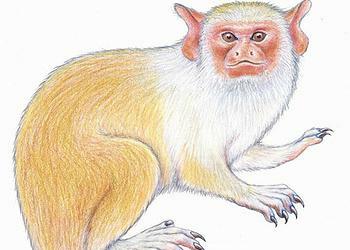
MANAUS, Brazil, August 9, 2019 (ENS) – A new species of marmoset has been discovered in the southwest of Brazil’s Pará state in an area of the Amazon that has suffered extensive illegal logging and agricultural conversion. The destruction is happening, the researchers say, “even within federal conservation units and protected indigenous lands.”
The researchers observe that the region where the marmoset was discovered is “one of the main fronts of forest destruction within the arc of deforestation, a region infamously characterized by fast, intense and disordered conversion of forests to pastoral and agricultural land and human settlements.”
The new species has been named Mico munduruku after the Munduruku Amerindians who live in the area where the monkey was discovered.

From 2015 to 2018, the researchers conducted 10 expeditions in key-areas within southern Amazonia where little or no information on marmosets was available.
“After about seven days traveling on the Tapajós River we reached the place where I recorded the new species,” said Rodrigo Costa-Araujo of the National Institute of Amazonian Research, Brazil, lead author of the paper describing the new species. “When I first saw the marmosets I got very excited because I saw white tails. This is a very uncommon feature in Neotropical primates.”
While most other Amazonian marmosets’ tails are black, the new species has a white tail, feet and hands, white forearms with a beige-yellowish spot on the elbow, and beige-yellowish saddle. Based on current knowledge, Mico munduruku occurs only within an area of 55,000 km2 in southwestern Pará State, Brazil.
Although it has just been identified, Mico munduruku is already at risk. Logging for dams, power plants and gold mining threaten the newly found monkey’s survival.
“Deforestation in the Amazon has accelerated markedly in recent months,” writes Nathan Williams of the nonprofit Fauna & Flora International, announcing the discovery. In June 2019, 88 percent more forest was cleared compared with June 2018. In addition to logging and agricultural expansion, four hydroelectric power plants have been approved for construction that will directly threaten the habitat of the newly discovered monkey.
“Just as we have discovered this species, we already need to be concerned about its survival,” the researchers wrote. “The threats to Mico munduruku will only increase as hydroelectric plants and complementary infrastructure schemes as roads and transmission lines are built, inducing more intense settlement and forest clearance in the region.”

In addition to the dam threat, Araujo says the region “is also a hotspot for gold miners, so there is dredging and digging of the river bed and its tributaries. It is a little-studied region and the biodiversity there is poorly known. Having a new primate species described here clearly demonstrates that the habitats of still unknown species are being destroyed.”
The researchers say more studies are urgently needed in order to learn more about the marmoset. At the moment they say Mico munduruku should be considered as Data Deficient under the criteria for the assessment of species conservation status on the Red List of Threatened Species maintained by the International Union for the Conservation of Nature, IUCN.
Marmosets have claw-like nails on all digits except the big toe, and the clawed toes are used for the vertical climbing of and leaping between trees. It also has long lower jaw incisors and incisor-like canines used to gouge holes in the bark of trees.
Costa-Araujo and his team were supported in their discovery of the new marmoset by the Conservation Leadership Programme, a partnership among nonprofit conservation organizations Fauna & Flora International, BirdLife International and the Wildlife Conservation Society, WCS.
“This is an excellent result for a team that has spent several years conducting scientific research on southern Amazonian marmosets. This discovery demonstrates how much there is to learn about the primates of the Amazon and further raises awareness of the threats facing the rainforest at a critical moment for its future,” said Stuart Paterson, executive manager, Conservation Leadership Programme, Fauna & Flora International.
Dr. Caleb McClennen, WCS vice president for global conservation, said, “WCS congratulates the research team that made this exciting discovery, which underscores the importance of protecting this biodiverse region from the threats of deforestation.”
“We are incredibly proud to part of the Conservation Leadership Programme, which is empowering young and emerging conservationists to do cutting-edge biodiversity research like this around the world,” McClennen said.
“We are very proud of Rodrigo and the team for making such a significant discovery at this early stage in their careers. Rodrigo started out with the Conservation Leadership Programme 2012, studying Marca’s Marmoset in the Brazilian Amazon, and has continued to research this fascinating and imperiled group of primates,” said Sherilyn Bos, program officer for capacity development, BirdLife International. “Passionate young people like this give us hope for the future of our planet’s forests.”
The paper announcing the discovery was published in the scientific journal “PeerJ — the Journal of Life and Environmental Sciences” and is online at: https://peerj.com/articles/7019/
Copyright Environment News Service (ENS) 2019. All rights reserved.
© 2019, Environment News Service. All rights reserved. Content may be quoted only with proper attribution and a direct link to the original article. Full reproduction is prohibited.
